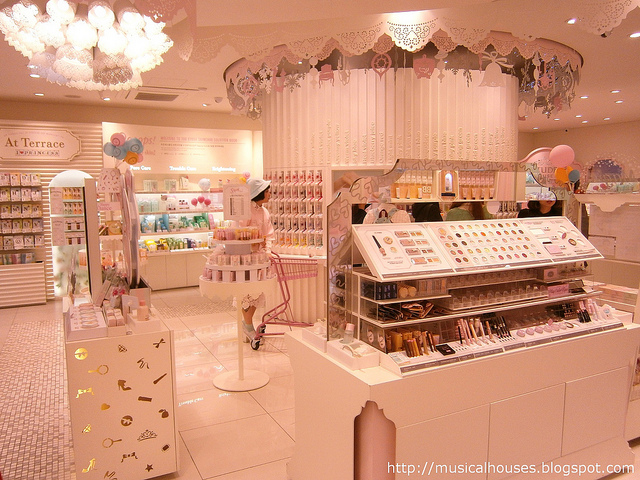Each industry sector has its own rule of doing business.
Telecom service relies heavily on selling new bundles to old clients. My mobile service sends me daily messages: proposing a discounted iPhone package, a faster connection, a 2-hour free call plan… I’m always amazed by their imagination to repackage old things and put it as a new product on the shelf. I call this method Lego marketing.
Online shopping malls are good at understanding client’s preference and make up-sells. I keep receiving emails from amazon since my last order, recommending all the best-sellers on technical sales.
However as the product becomes more technically complex, these fluffy tactics disappear, and we go back to the good old business way. No place for fancy promotions and hearty small talks. We meet the real persons and show them the real things – features and figures, the only things important in engineer’s mind. “Let the technique speaks for itself” is the motto of my engineer manager.
Marketers are considered tricky and technically weak by engineers, and we certainly don’t want to be associated with such low profile.
That’s why before I came to my good sense, the most audacious marketing move that I ever did was sending out an email to remind users about maintenance fees. I still remember this email. The main body was a long list of new features, and the bottom was “By the way, we have upgraded the 7/24 technical support exclusively for maintenance users”, which I thought was a diplomatic way to say “Pay your maintenance or we’ll stop your service”. Now you see how engineers tend to avoid marketing, or bring up the money talk generally.
I wanted to know why engineers hate marketing, and asked this question to several other engineers. The answers I got are very interesting.
“But we shouldn’t lie to clients, making promises that we cannot technically achieve”
“I’m here to create value, not to dance in party mascot”
These are two common misunderstandings of engineers towards marketers: cheater and clown. I cannot figure out why they think like that, properly they are victims of bad marketers or stereotyped Hollywood movies.
Good marketing is opposite of all these. Good Marketing is about building the real transparency of the product, helping clients make wiser choice and delivering the value that engineers have worked so hard to create. It is important for telecom service and bookstore, but it is even more important for companies who provide technically complex products. I’ll just mention 2 important reasons.
1) Technical clients need more information and longer time to purchase
If you are selling boiler equipment, or structural design software, you can hardly close a deal in weeks, even months is an optimistic estimate. Just because the product involves too many technical specificities and too much value that client cannot risk to take impulsive decisions. Client needs longer time to collect information, compare options and discuss involving multiple roles.
You might count on your product to shine through the proposal or technical demonstration, but the competition starts long before your sales rep pick up the first call.
With a simple search on google, product information that anyone can find is beyond imagination — specification, online manuals, product in action videos, reports comparing similar products, good and bad reviews from clients… All these contents contribute to client’s decision making.
Without enough marketing activities to create good rich contents and build that trust, you can imagine the product at unfair disadvantage in the competition.
2) Technical clients need more after-sale care
You might naturally think people who have bought your product know perfectly well how to implement and use it, but that is far from truth. It’s not rare case that only when calling for renew fee, we realised that the software has been somewhere to collect dust since the last engineer who could use it left the company. It’s sad to lose a life-time client, but it’s heart-broken to see the value that we’ve created is wasted.
If you’ve already created the product, why not take a further step to educate people how to use it properly? Why not build something to let your users find support and help from not just you but other users?
One excuse is it’s “good to have” but not “urgent”, and since there are tons of client queries to answer, let’s do it next time.
Another one is building this system seems effort and money taking, but we can’t easily measure its performance as counting the number of support tickets.
There’s certainly something to change in our habitual way of thinking client support. Solving more queries don’t necessarily means providing better service. It can also mean clients can’t find information themselves so they have to ask you for help. There are probably other clients who don’t bother to ask you, and switch to another product instead, just like the company which stopped using our software because new engineers don’t know how to start learning it.
Building a content system is not easy, but the benefits is huge.
– It provides natural marketing to both prospects and existing clients. People will trust you and your product, just because they get good advice from you.
– Your users start to support themselves instead of sending you all the questions, so you save your valuable time.
– Once the system is made and contents are created, they will stay and help more and more people, your influence will get an exponential growth.
That is what marketing looks like. It’s all about building trust and delivering value using knowledge.
But do I need a marketing specialist to take care of all that or can I do it by myself?
Ideally, yes, there should be a technical marketing specialist understanding both technique and business, leading a whole team to create content, to make marketing materials to build marketing channels and to run marketing campaigns. But let’s be realistic, unless you work in a top 500 company, or a start-up SaaS, it’s unlikely that you’ll have this privilege. More likely there is no such team, one person (probably you) occasionally takes some time to update the new feature descriptions to your company’s homepage.
In this case you, technical engineer, will be the only hope. Take the responsibility and be the hero for your product. I will show you in future posts that, after learning a little bit of marketing knowledge and skills, you can be the perfect marketing leader for your product.






